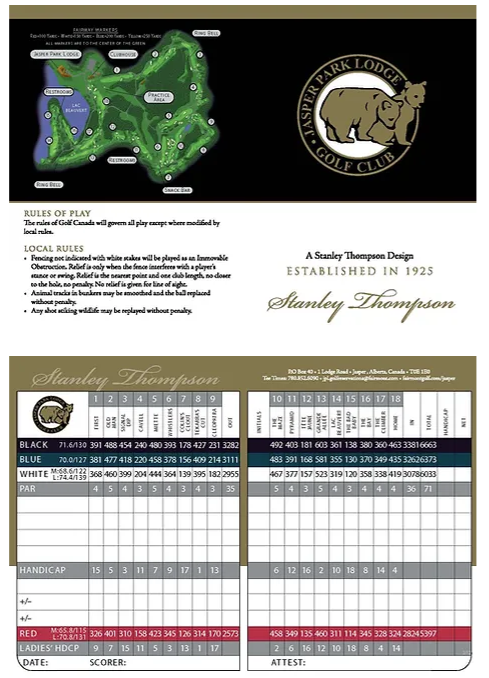Golf scoring might seem confusing at first, but once you understand how it works, the game becomes much more exciting, whether you’re playing or watching. In this blog, we break down the basics, from what “par” means to the thrill of scoring a birdie and more. Let’s unravel the mystery behind golf scoring and show you how each stroke counts.
Feeling inspired? Explore our current offers and start planning your next golf adventure!
How Golf Scores Work
Each time you hit the ball, it counts as a stroke. The goal is to finish the game with the lowest number of strokes possible. Over 18 holes, you’ll aim to match or beat par on a variety of course challenges. Par is the standard number of strokes an expert player is expected to take to complete a hole. It’s determined by the hole’s length and difficulty: par 3 for short holes, par 4 for medium, and par 5 for long ones. To stay competitive, players try to meet or beat par on every hole.
To calculate a golf score, players add up the strokes taken on each hole during the round. The player with the lowest total score at the end wins. In professional tournaments, golfers often play several rounds, and the combined score across all games determines the winner. When you total the pars for every hole, you get the course par. Most standard courses have a par around 72. For example, Fairmont Jasper Park Lodge is 71, Fairmont Chateau Whistler is 72, and Fairmont Banff Springs is also 71.
Golf Shot Terminology
The different terms used to describe your golf game shots are below:
- Albatross: 3 under par
- Eagle: 2 under par
- Birdie: 1 under par
- Par: even par
- Bogey: 1 over par
- Double Bogey: 2 over par
- Triple Bogey: 3 over par
Ways to Play Golf
Two common ways to play golf: Stroke Play and Match Play.
Stroke Play:
‘Stroke play” is the most common scoring system in golf and is used in most professional tournaments, including those on the PGA Tour. In this format, every stroke is counted and added up at the end of the round. Players then compare their total score to the course’s par to see how many strokes over or under they finished.
Match Play:
In match play, you and another golfer compete to win individual holes. Instead of adding up strokes for the entire round, the focus is on who wins the most holes. The player who wins the most holes wins the match.
Introduction to Penalty Strokes
Golf courses are designed to challenge players both mentally and physically. Course designers carefully create obstacles to test skill and strategy. When you encounter these challenges during a round, they can affect your score in different ways. Here are a few common situations that result in penalty strokes:
- Out of bounds: If your ball goes out of bounds, you must take another shot and add one stroke to your score.
- Water hazard: Hitting into a water hazard also requires you to replay the shot and take a one-stroke penalty.
- Lost ball: If you lose your ball, return to the previous spot, hit again, and add one stroke.
- Illegal cleaning: Cleaning your ball on the fairway, even to check for damage, results in a one-stroke penalty.
The examples above are some of the most common penalty scenarios in golf. Hitting out of bounds or into a water hazard requires you to take another shot and adds a penalty stroke to your score. If you lose your ball, you’ll need to return to where you last played, hit again, and add an extra stroke.
Introduction to How Golf Handicaps Work
We are only going to touch on this high level. We could create a whole separate blog on what a golf handicap is.
Golf handicaps help level the playing field so golfers of all skill levels can compete fairly. Your handicap is based on the average number of strokes you shoot over par. On courses like Fairmont Jasper Park Lodge, each hole is ranked from 1 to 18 in difficulty—1 being the toughest, 18 the easiest. These rankings appear under the “Handicap” line on the scorecard.
Handicap Example
Let’s say player two has golfed Fairmont Jasper Park Lodge 5 times and shot a 79, 82, 78, 76, 80 = 395/5 = 79-71 (Golf Course Par for Jasper) = 8.
That means player two’s handicap would be 8. See below for how this would play out on the course against player one.

Continuing the example, player one has a zero handicap, while player two has an 8 handicap. That means the player with the zero handicap would have to give 8 shots to the higher handicap. However, the handicap rating from 1-18 dictates the holes for taking shots on the course, allocating them to the most challenging eight holes. As you can see above (scorecard), player two would “get” a shot (minus a stroke) on 15, 7, 12, 9, 11, 4, 14, and 6. Therefore, if player two (8 handicap) shot 6 on hole 15, they would get to mark down a 5.
In conclusion, how golf scoring works can be challenging. From par to achieving birdies, each swing tells a story of skill and strategy. Whether in Stroke Play or Match Play (or for fun), golfers navigate challenges like out-of-bounds shots and water hazards, adding complexity to the game. While handicaps ensure players of varying abilities compete on an even ground. Overall, golf is a complicated game, but it only needs to be taken as seriously as you want to, so go out and have fun on the greens!







